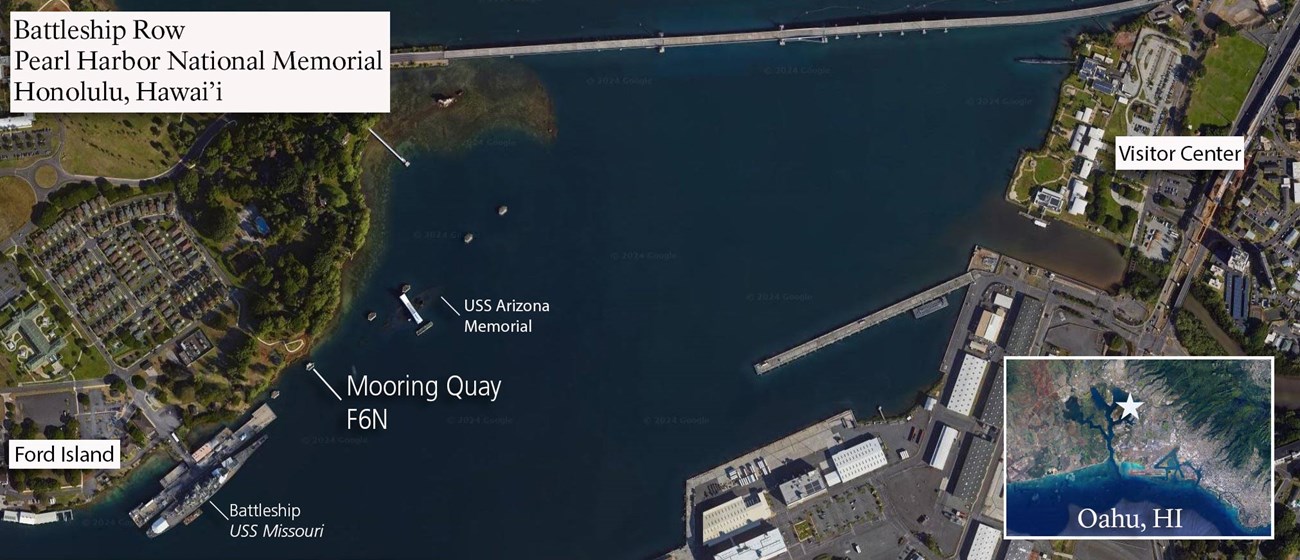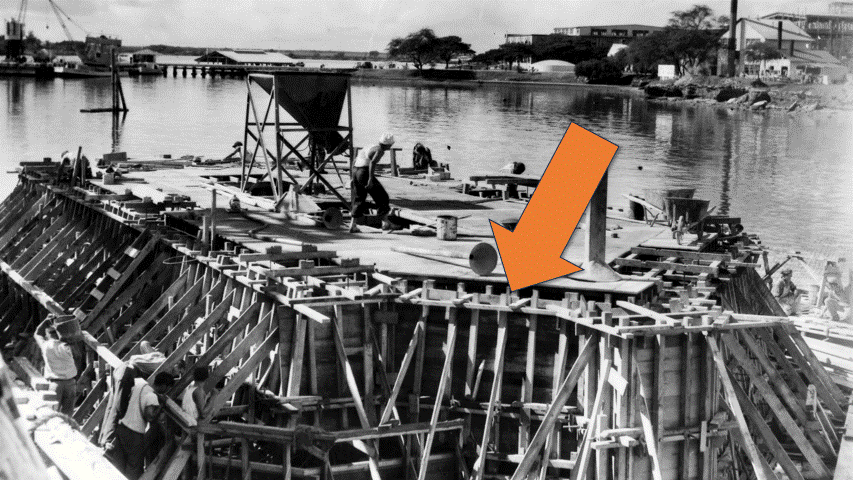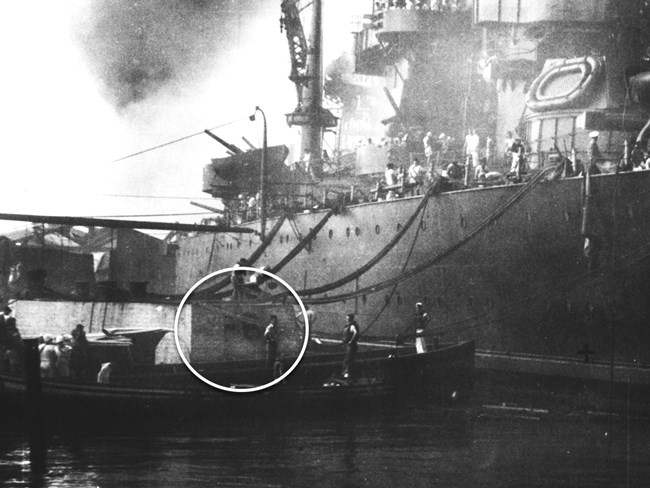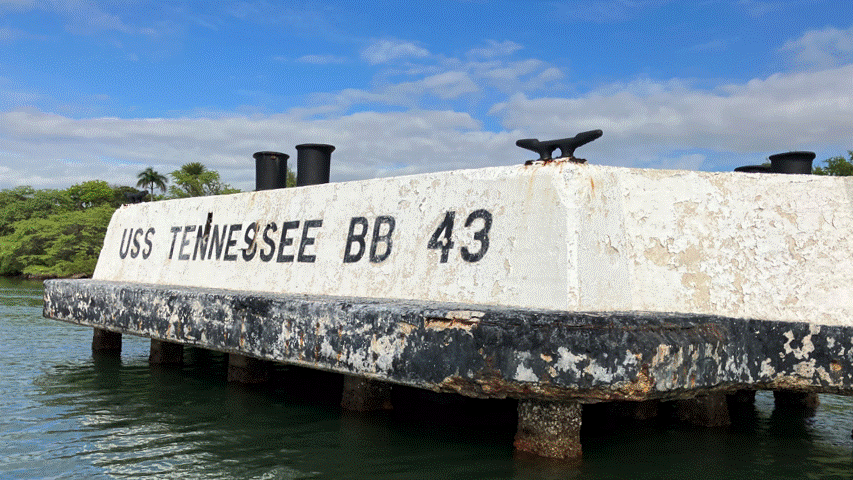Part of a series of articles titled Ford Island Battleship Row Preservation .
Article
Silent Sentinels: Preserving the Mooring Quays of Pearl Harbor National Memorial
- Duration:
- 3 minutes, 38 seconds
A crew of skilled tradesfolk from HPTC are working on preserving one of the mooring keys at Pearl Harbor.
The National Park Service (NPS) has begun a multi-year effort to preserve the fleet mooring quays of Battleship Row and return them to their 1941 appearance. In 2023, the NPS Historic Preservation Training Center (HPTC) completed a project on quay F-6-N, where the USS Tennessee and USS West Virginia were moored on December 7, 1941.
The quays were silent sentinels to the events of that day. During the chaos, they served as places of refuge for sailors and soldiers as they escaped the burning ships exploding around them. The quays once survived bombs and fire damage but are now facing threats of time and saltwater.
“We left the ship and got onto the quay… and jumped into the water, which was covered with oil and fire. While we were swimming, we could feel the explosions in the water – it felt like it was enough to tear your flesh off.” Don Erwin McDonald

NPS Photo
Caring for Historic Structures
The string of quays on Battleship Row are evocative historic features. Their presence helps visitors imagine the events of the day. NPS is careful to avoid repairs that create a false sense of history. Materials, features, and construction techniques of the time are honored, which means that preservation crews must carefully conduct repairs by hand. This ensures that repair blends into the original materials, down to recreating the impressions in the concrete from the original wooden board forms.“Preservation is defined as the act or process of applying measures necessary to sustain the existing form, integrity, and materials of an historic property.” Secretary of Interior’s Standards for The Treatment of Historic Properties

NPS photos, courtesy Pearl Harbor National Memorial collection (USAR-3051) and Concrete Preservation Institute, 2015

NPS photos, September 2022
Throughout this work, they were careful to preserve the historic battle damage. Previous reports had identified the location of this fire and blast damage. If damage was not harmful to the durability of the quay, the marks were left as powerful reminders of the historic events.1

NPS Photo, Pearl Harbor National Memorial archives (USAR-423)
Historic Paint Scheme
In a departure from the current paint scheme, the park is returning the quays to their historic designations and will no longer display the ship names on their sides. For example, quay F-6-N recently read “USS Tennessee BB 43.” Now it reads “F6,” with the label placed to accurately align with historic records. Historic photos suggest that on the day of the attack, the quay exteriors were painted a light color, most likely white, with berth designations painted in black. You can see this circled in the historic photograph. The first record the park has of battleship names being painted on the side of the quays is from the 1982 USS Vestal survivor’s reunion.2 In addition to returning the paint scheme to its 1941 appearance, the park is developing new interpretive programming so that visitors will better understand the significance, use, and history of the moorings as part of Battleship Row.By ensuring historic accuracy, the NPS can both honor the sailors, soldiers, and Marines who lost their lives, while still providing a quality visitor experience through accurate interpretation.“A false sense of history will not be created by adding conjectural features, features from other properties, or by combining features that never existed together historically.” Secretary of the Interior’s Standards for Historic Preservation

NPS photos
The Future of Ford Island
Work on F-6-N is now complete and HPTC will undertake similar work on F-6-S in 2024. This is part of a larger effort to preserve the Ford Island unit, which the NPS acquired from the Navy in 2009. With this and other projects the park is working on over the next few years, the site is poised to provide a unique visitor experience. We appreciate the hard work of the HPTC crew and are excited for their help in continuing to tell the story of the attack on Pearl Harbor.References
1. “United States Navy Fleet Moorings, Battleship Row,” Pearl Harbor National Memorial Historic Structures Report, National Park Service, October 2019, pp. 135-138.2. “Cultural Landscape Report for Ford Island CPO Bungalows Neighborhood and Battleship Row,” Pearl Harbor National Memorial, National Park Service, August 2020, p.46.
Learn More
Source: NPS DataStore Collection 9431. To search for additional information, visit the NPS DataStore.
Last updated: August 27, 2024
